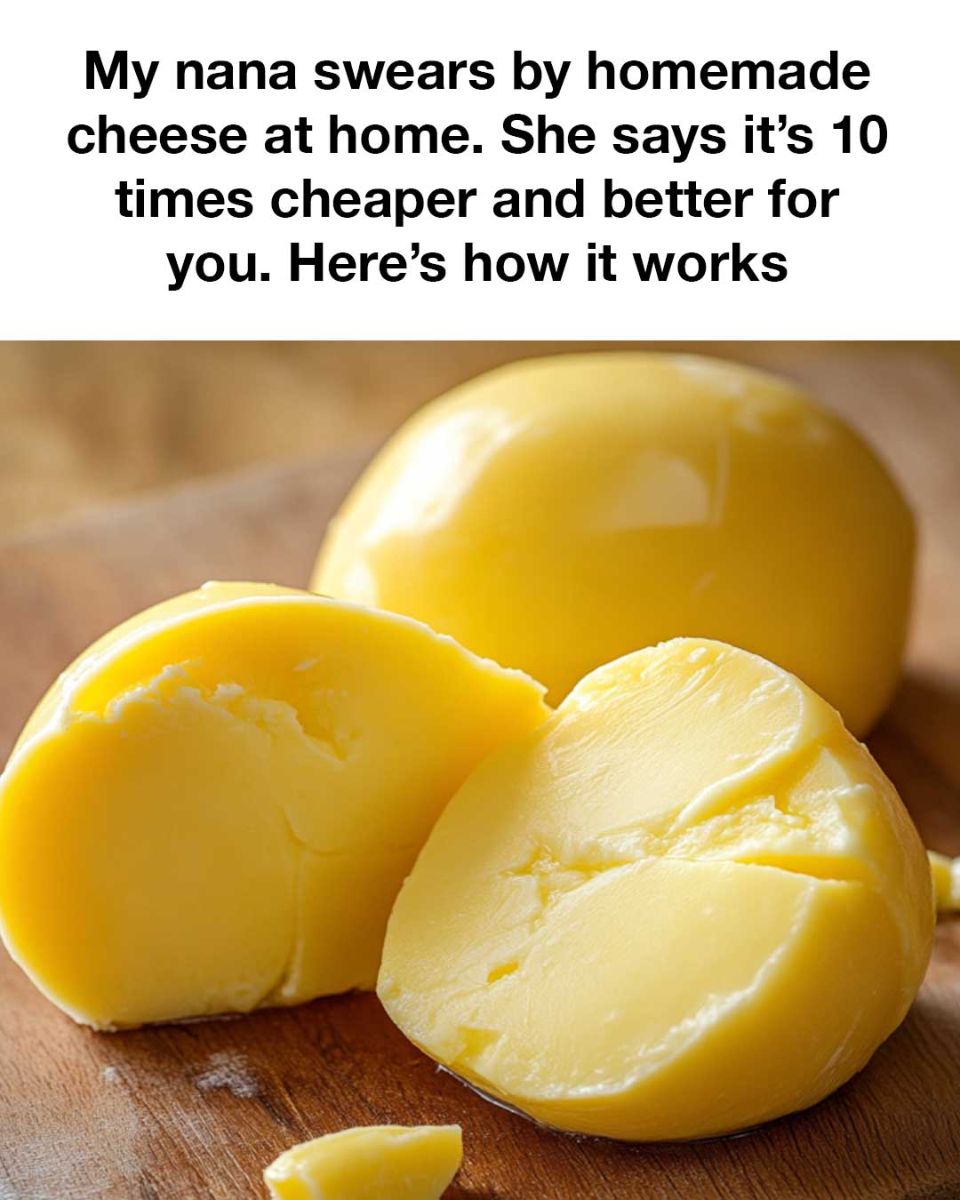In a world where convenience often trumps tradition, my Nana remains a beacon of old-school wisdom. She has a knack for turning simple ingredients into delicious, wholesome meals. One of her best-kept secrets? Homemade cheese.
Nana insists it’s not only 10 times cheaper than store-bought cheese but also significantly healthier. Intrigued by her claim, I decided to dive into the process and benefits of making cheese at home. What I discovered was eye-opening, and I’m here to share it with you.
Advertisement
The Economics of Homemade Cheese
Let’s start with the cost. Cheese can be expensive, especially high-quality, organic, or specialty cheeses. A pound of cheese can easily set you back $8 to $20, depending on the type. On the other hand, the ingredients for homemade cheese are minimal and inexpensive. All you really need is milk, an acid like lemon juice or vinegar, and salt.
For example, a gallon of milk (which can cost around $3 to $5) yields approximately one pound of cheese. The other ingredients cost mere cents. When you do the math, it’s easy to see how Nana’s claim that homemade cheese is 10 times cheaper holds water. Over time, the savings really add up, especially if you’re a regular cheese consumer.
The Health Benefits of Homemade Cheese
Beyond cost, Nana is a firm believer in the health benefits of homemade cheese. Here’s why:
Control Over Ingredients: When you make cheese at home, you have complete control over what goes into it. Commercial cheeses often contain additives, preservatives, and artificial flavors. By making it yourself, you avoid unnecessary chemicals and additives, which is particularly important for people with food sensitivities or those trying to eat clean.
Fresher and More Nutritious: Homemade cheese is incredibly fresh, and because it’s unprocessed, it retains more of the natural nutrients found in milk, such as calcium and protein. Fresh cheese also has a rich, creamy taste that’s hard to beat.
Lower Sodium: Store-bought cheeses can be loaded with salt to enhance flavor and prolong shelf life. By making your own, you can control the amount of salt, making it a healthier option, particularly for those monitoring their sodium intake.
Probiotic Potential: If you venture into making cultured cheeses like yogurt cheese or ricotta, you can benefit from the probiotics they contain, which are great for gut health.
The Process: How to Make Homemade Cheese
Making cheese at home may sound daunting, but Nana’s method is simple and straightforward. Here’s a basic recipe to get you started:
Ingredients:
1 gallon of whole milk (preferably organic and not ultra-pasteurized)
1/4 cup lemon juice or white vinegar
Salt to taste
1/4 cup lemon juice or white vinegar
Salt to taste
Instructions:
Heat the Milk: Pour the milk into a large pot and slowly heat it over medium heat. Stir occasionally to prevent scorching. Heat until the milk reaches about 190°F (just before boiling).
Add the Acid: Once the milk is heated, remove it from the stove. Slowly add the lemon juice or vinegar, stirring gently. You should see the milk begin to curdle, forming curds (the solid part) and whey (the liquid part).
Let It Sit: Let the mixture sit undisturbed for about 5 to 10 minutes. This allows the curds to fully separate from the whey.
Strain the Curds: Line a colander with cheesecloth and place it over a large bowl. Pour the curds and whey into the colander, allowing the whey to drain away. You can save the whey for other uses like baking or adding to smoothies.
Season and Shape: Gather the cheesecloth around the curds and gently squeeze out any remaining whey. Add salt to taste, then shape the cheese as desired. For a firmer cheese, you can press it with a heavy object for a few hours.
Enjoy: Your homemade cheese is now ready to eat! Store it in the refrigerator, and enjoy it within a week.
The Versatility of Homemade Cheese
One of the most exciting aspects of making cheese at home is the variety you can experiment with. From soft cheeses like ricotta and cream cheese to firmer varieties like paneer and mozzarella, the possibilities are endless. You can also infuse your cheese with herbs, garlic, or spices to create unique flavors.
A Sustainable Choice
Making cheese at home is not only economical and healthy, but it’s also a sustainable choice. By reducing your reliance on plastic-packaged store-bought cheese, you’re cutting down on waste. Plus, homemade cheese often requires less energy and fewer resources to produce compared to mass-produced cheese, which often involves long supply chains and significant transportation.
Final Thoughts: A Return to Tradition
In today’s fast-paced world, it’s easy to overlook the value of traditional methods of food preparation. However, as my Nana has shown, there’s something to be said for slowing down and taking the time to make things from scratch. Not only is homemade cheese cheaper and better for you, but it also brings a sense of satisfaction and connection to your food that’s hard to replicate with store-bought products.
Advertisement
So, next time you’re at the grocery store, consider picking up a gallon of milk and trying your hand at cheese-making. You might just find, like Nana, that homemade cheese is worth every bit of effort—and it’ll save you a pretty penny in the process.

